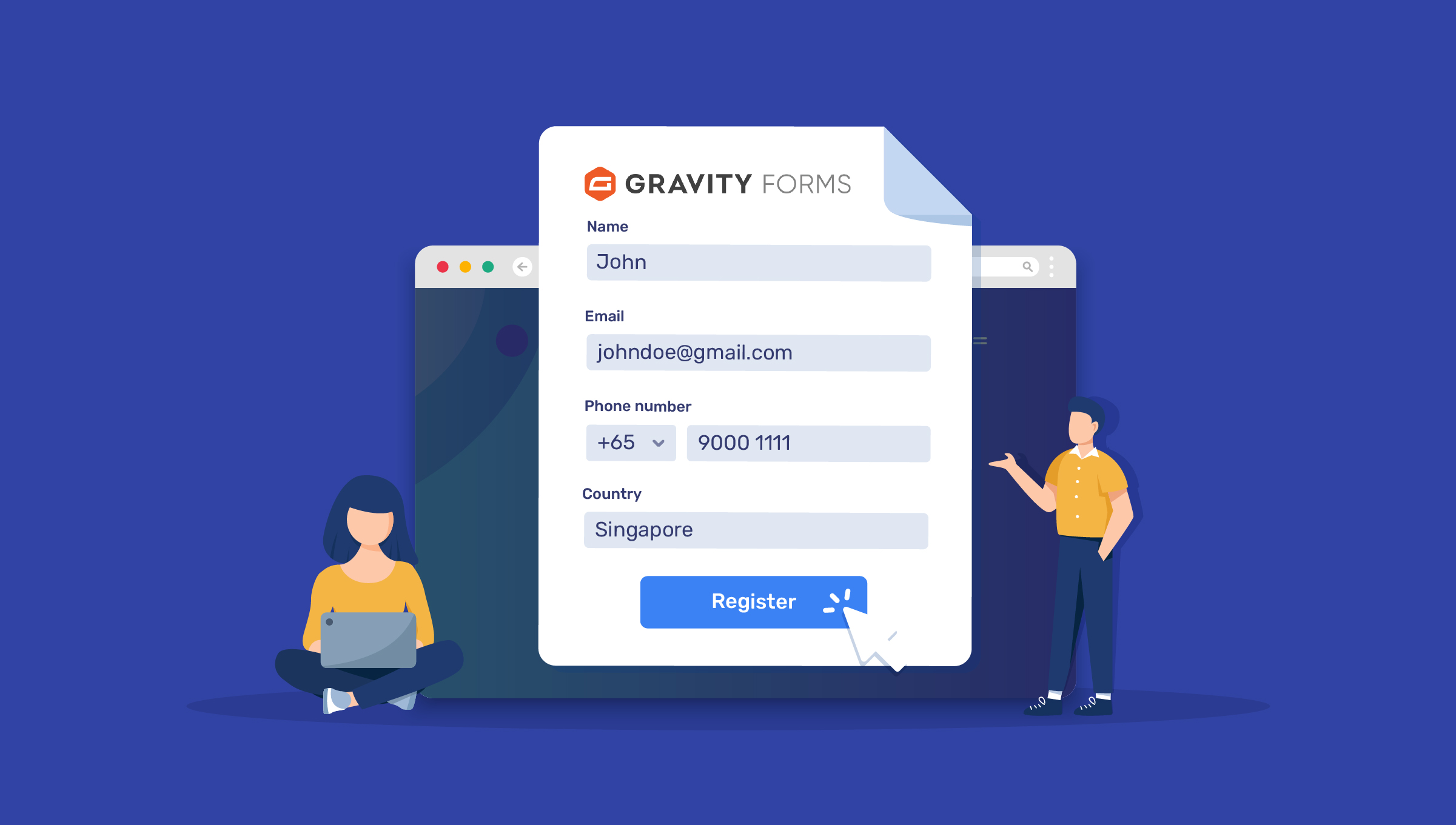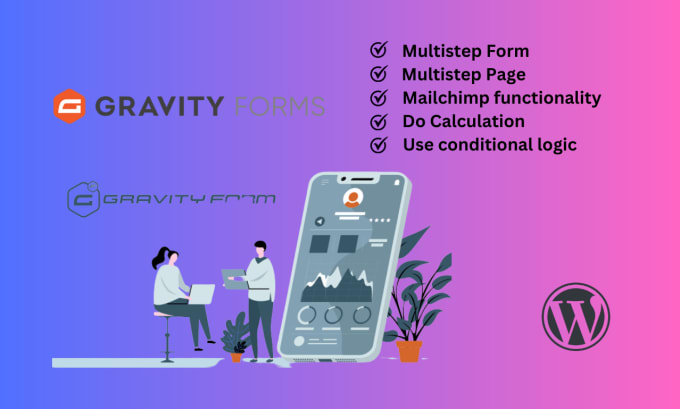A Comprehensive Review of Gravity Forms: Unleashing the Power of this Top-rated WordPress Plugin
Gravity Forms is a powerful WordPress plugin that allows you to create advanced forms with ease. Whether you need a simple contact form or a complex multi-page survey, Gravity Forms has got you covered. With its intuitive drag-and-drop interface and extensive customization options, this plugin has become the go-to solution for many website owners and developers.
Key features of Gravity Forms
Gravity Forms offers a wide range of features that make it stand out from other form plugins. One of the key features is its ease of use. The drag-and-drop interface makes it simple to create and customize forms without any coding knowledge. Additionally, Gravity Forms provides a rich set of field types, including text fields, checkboxes, drop-down menus, file uploads, and more.
Another standout feature of Gravity Forms is its conditional logic. This allows you to show or hide fields based on user input, making your forms more dynamic and user-friendly. You can also set up advanced calculations and use conditional logic to display calculated values in real-time.
CLICK HERE TO EXPERIENCE “GRAVITY FORMS”>>>
Benefits of using Gravity Forms on your WordPress site
There are numerous benefits to using Gravity Forms on your WordPress site. Firstly, it greatly improves the user experience by providing a seamless and intuitive form-building process. With its drag-and-drop interface, you can easily create forms that match the look and feel of your website.
Secondly, Gravity Forms integrates seamlessly with various third-party services and applications. This means you can easily connect your forms to popular email marketing platforms, payment gateways, CRM systems, and more. This integration saves you time and effort by automatically sending form submissions to your desired destinations.
Lastly, Gravity Forms offers excellent support and documentation. Their team is dedicated to ensuring that users have a smooth experience and are there to assist with any issues or questions. The extensive documentation provides step-by-step guides and tutorials to help you make the most out of the plugin.
CLICK HERE TO EXPERIENCE “GRAVITY FORMS”>>>
Setting up and installing Gravity Forms
Setting up and installing Gravity Forms is a straightforward process. First, you need to purchase a license from the Gravity Forms website. Once you have the license, you can download the plugin as a .zip file. Next, login to your WordPress dashboard and navigate to the “Plugins” section. Click on “Add New” and then “Upload Plugin.” Choose the .zip file you downloaded and click “Install Now.”
After the installation is complete, you need to activate the plugin. Go to the “Plugins” section and find Gravity Forms in the list. Click on “Activate” to enable the plugin on your site.
Exploring the form builder interface
Once Gravity Forms is activated, you can start creating forms by navigating to the “Forms” section in your WordPress dashboard. Here, you will find a list of all your forms, both new and existing. To create a new form, click on “Add New.”
The form builder interface is divided into two main sections: form settings and form fields. In the form settings section, you can set a form title, description, and other general settings. You can also choose the form layout and customize the submit button.
In the form fields section, you can add and customize the fields for your form. Gravity Forms provides a wide range of field types, such as single-line text, paragraph text, checkboxes, radio buttons, and more. You can easily drag and drop fields onto your form and rearrange them as needed.
CLICK HERE TO EXPERIENCE “GRAVITY FORMS”>>>
Creating and customizing forms with Gravity Forms
Creating and customizing forms with Gravity Forms is a breeze. Once you have added the desired fields to your form, you can start customizing them to fit your needs. Each field has its own set of options that allow you to control its appearance and behavior.
For example, you can add placeholder text, set field validation rules, and even add custom CSS classes to specific fields. You can also enable conditional logic for individual fields, making them appear or disappear based on user input.
Gravity Forms also allows you to set up notifications and confirmations. Notifications are email alerts that are sent to specified recipients whenever a form is submitted. Confirmations, on the other hand, are messages that are displayed to users after they submit a form.
Advanced form features and functionality
Gravity Forms offers advanced features and functionality that take your forms to the next level. One of these features is the ability to create multi-page forms. This allows you to break up long forms into smaller, more manageable sections, improving the user experience.
Another powerful feature is the form entry management system. Gravity Forms stores all form submissions in a database, allowing you to view and manage them from within your WordPress dashboard. You can easily search, filter, and export form entries for further analysis.
Additionally, Gravity Forms supports file uploads, which is useful for accepting resumes, images, or any other type of file from your users. You can set file size limits, allowed file types, and even specify where the uploaded files should be stored.
CLICK HERE TO EXPERIENCE “GRAVITY FORMS”>>>
Integrating Gravity Forms with third-party services and applications
Gravity Forms seamlessly integrates with a wide range of third-party services and applications. For instance, you can connect your forms to popular email marketing platforms like Mailchimp or Constant Contact. This integration allows you to automatically add form submissions to your email list, saving you time and effort.
Furthermore, Gravity Forms supports integration with payment gateways like PayPal and Stripe. This enables you to create order forms or donation forms and securely process payments directly from your website.
Gravity Forms also integrates with various CRM systems, such as Salesforce and HubSpot. This integration allows you to automatically create leads or contacts in your CRM whenever a form is submitted.
Extending Gravity Forms with add-ons and plugins
Gravity Forms offers a wide range of add-ons and plugins that extend its functionality even further. These add-ons allow you to integrate with additional services, add advanced features, and enhance the overall performance of your forms.
For example, there are add-ons available for popular email marketing platforms like Mailchimp, allowing you to sync form submissions with your email lists. There are also add-ons for CRM systems, payment gateways, and more.
Gravity Forms also has various third-party plugins that enhance its functionality. These plugins provide additional form field types, advanced calculations, conditional logic enhancements, and much more. With these add-ons and plugins, you can truly customize your forms to meet your specific requirements.
CLICK HERE TO EXPERIENCE “GRAVITY FORMS”>>>
Gravity Forms pricing and licensing options
Gravity Forms offers several pricing and licensing options to cater to different needs. They offer three main license types: Basic, Pro, and Elite. The Basic license allows you to use Gravity Forms on one site, while the Pro license allows for use on up to three sites. The Elite license, on the other hand, allows for unlimited site usage.
The pricing is based on an annual subscription model, meaning you need to renew your license each year to continue receiving updates and support. The Basic license starts at $59 per year, the Pro license at $159 per year, and the Elite license at $259 per year.
Gravity Forms customer reviews and testimonials
Gravity Forms has received positive reviews from users around the world. Users appreciate the ease of use and the extensive customization options that the plugin offers. The conditional logic feature, in particular, is highly praised for its ability to create dynamic and interactive forms.
Furthermore, users have commended the excellent support provided by the Gravity Forms team. The documentation and tutorials provided are also highly regarded, as they help users make the most out of the plugin.
CLICK HERE TO EXPERIENCE “GRAVITY FORMS”>>>
Gravity Forms alternatives and competitors
While Gravity Forms is a top-rated WordPress plugin, there are alternatives and competitors available in the market. One popular alternative is WPForms, which offers similar form-building capabilities with a user-friendly interface. Ninja Forms is another contender, known for its flexibility and extensive add-on library.
Formidable Forms is also a notable competitor, offering advanced features like views, graphs, and reports. Lastly, Caldera Forms is a free plugin that provides a good set of features for basic form-building needs.
Conclusion: Is Gravity Forms the right WordPress plugin for you?
Gravity Forms is undoubtedly one of the best form plugins available for WordPress. Its intuitive interface, advanced features, and extensive customization options make it a powerful tool for building any type of form.
If you need to create simple contact forms or complex multi-page surveys, Gravity Forms has all the features you need. It seamlessly integrates with popular third-party services and applications, saving you time and effort.
However, it’s important to consider your specific requirements and budget before making a decision. Evaluate other alternatives and competitors to ensure you choose the right plugin for your website’s needs.
Overall, Gravity Forms is a top-rated WordPress plugin that can greatly enhance the functionality and user experience of your website. Give it a try and unleash the power of Gravity Forms on your WordPress site today!










